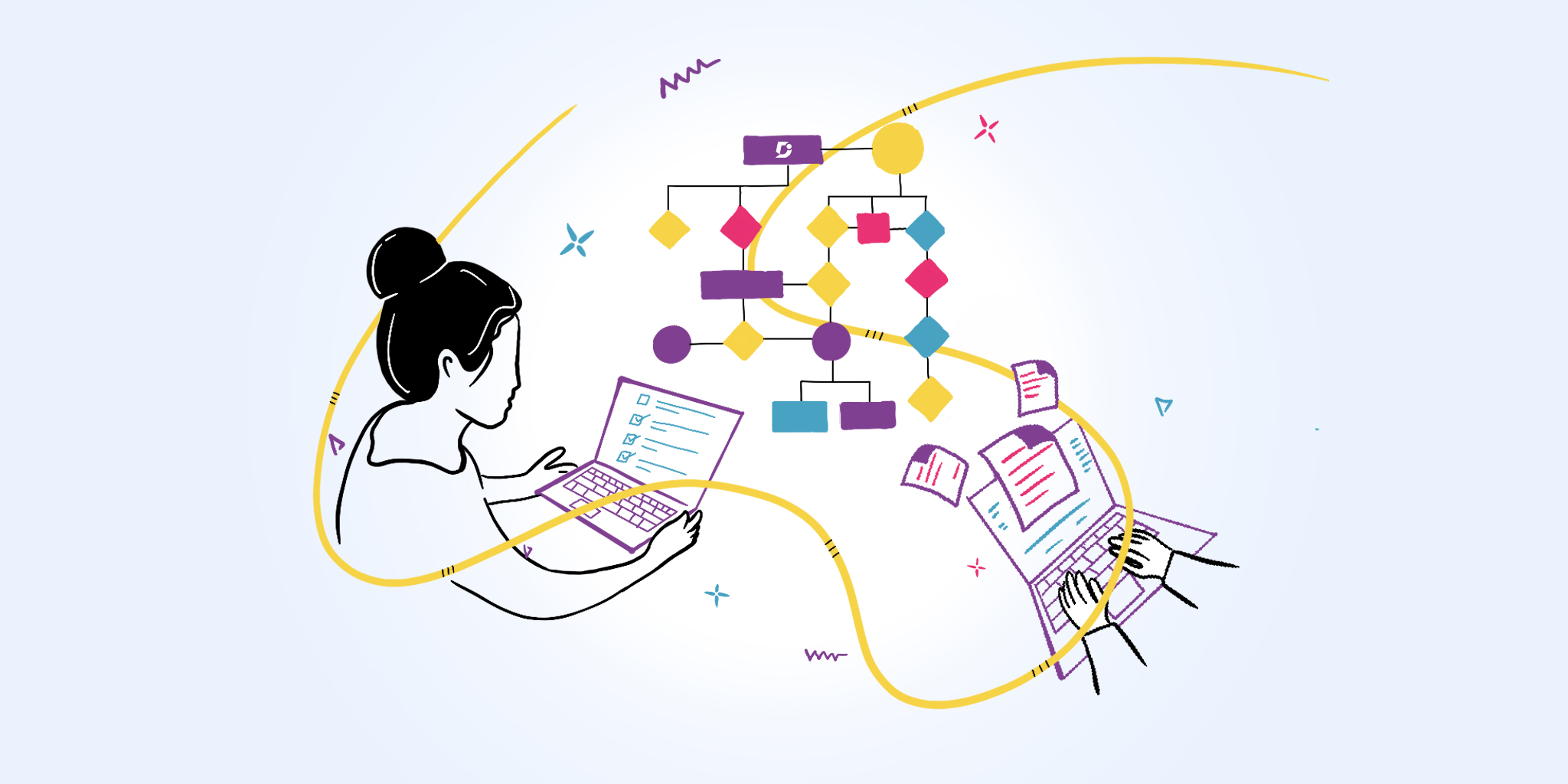Employees need to know the policies and procedures that are important to the company for them to do their jobs effectively. Employees who are ready to take action in your workplace are more productive and able to make better decisions within your business. If employees don’t know how your company works, they aren’t able to complete their work in line with the company’s policies.
Policies and procedures manuals are essential for companies that want to operate at a higher standard than their competitors. When employees have questions, they need to have a resource they can consult to provide them with ready answers. Your business needs to be standardized and ensure that the level of work remains consistent.
In this article, we discuss what a policy and procedure manual is, how to create one, and some best practices for making sure it is successful.
What are Policies and Procedures Manuals?
Policies and procedures manuals are a central repository where your employees can access a structured internal document. They can learn exactly how your company operates and find a viable solution to the decisions they are obligated to make.
These types of manuals contain all the information relating to how your business operates, from best practices, expectations of employees, working policies, HR policies, guidance for technology, and much more.
A policy and procedure manual ensures that all your employees are working from the same rulebook. They guide all major decisions and actions employees need to take when conducting themselves in the workplace. The manual ensures that a high standard of professionalism is adhered to at all times.
Types of Mandate Policy and Procedure in Workplaces
Workplace Procedure
Manuals can contain information on the procedures that apply within the workplace so employees have rules to follow. It might inform employees of the process for embarking on a new project, for example, or the process to follow when hiring a new employee.
Leave Policy
Leave policy tells your employees the process they need to go through with booking leave, for example how far in advance they need to book their leave and the need to leave a handover.
Relocation Policy
Manuals instruct employees about the process they need to go through when being relocated to a new office, and how they might apply for such a position.
Health and Safety Procedure
It’s important to keep employees informed about health and safety procedures that operate within the company, such as the safe use of an employee workstation.
Employee Benefits Policy
Employees need to know about the benefits policy that your company offers such as the cycle-to-work scheme, maternity and paternity leave, and training.
Organization Culture Policy
Some companies find it helpful to make their organizational culture policy explicit and to let employees know what is expected of them when interacting with colleagues or conducting themselves in the workplace.
Employee Referral Policy
When employees refer others for a position within the company there can often be compensation for doing so. The employee referral policy details exactly how an employee can recommend someone for a role.
Team Outing Policy
There may be times when teams go on an outing that is outside of the workplace and the manual needs to offer guidance on how employees should conduct themselves.
HR Policy
Your HR department will have many in-depth policies governing how your business handles its personnel, from disciplinary procedures to making a complaint.
Remote Working Procedure
Manuals can tell employees the process for remote work and give guidance on how employees should conduct themselves when working away from the office. It might instruct employees about the need to check in with their line manager and the policy for remote meetings.
An intuitive internal knowledge base software to easily add your content and integrate it with any application. Give Document360 a try!
GET STARTED
Why Do You Need a Policy and Procedure for Your Business?
There are many benefits to having a policy and procedure manual for your business, not least because it helps build a healthy company culture and ensures that employees can productively play a part in meeting the objectives of the business.
Improve Compliance
Companies need policy and procedure manuals to improve employee compliance with the rules and regulations of the workplace. Every business has legal requirements they need to follow and employees need to be aware of them to conduct business appropriately.
Streamline Internal Procedures
When employees know what is expected of them this can streamline internal procedures and ensure everyone is working towards the same standard. If you make standard operating procedures explicit in your manual, this makes it easier for employees to follow them.
Guiding You Through Incidents and Emergencies
Every company experiences times when unexpected incidents or emergencies occur and the manual can provide guidance on how to handle these situations. It can state protocols for employees to follow to help minimize the business impact of these incidents and maintain the smooth running of the company.
Tell Your Employees Where They Can Go for Assistance
Employees often have questions about their role or the business and the manual can show employees who they should turn to for help. For example, if they are experiencing harassment in the workplace, the manual can provide the procedure for employees to follow.
A Trusted Source of Information for Employees
Your manual functions as the single source of truth for all employees and they can rely on the fact that the information in it is correct. Instead of guessing about the correct policy, employees can simply consult your manual for reliable direction.
Make Structures and Processes Consistent
When procedures and processes are made explicit this keeps them consistent for employees to follow. Employees can benefit from step-by-step guides that detail exactly how to carry out their work, which helps them work more effectively with their colleagues.
Steps in Writing a Policy and Procedure
Step 1: Conducting Research
The first step is to conduct research into the content that will need to be included in your policy and procedure manual. You’ll need to consult every department to find out exactly what they require from your manual and the information that is currently missing from their jobs. Make a list of all the topics you want to cover – but don’t worry, you won’t be doing all the work yourself.
Step 2: Assembling a Team
The second step is to put a team together who can be responsible for creating your content. Your team should include representatives from every department who will know necessary to create a valuable resource. Employing a wide range of expertise is crucial for building a manual that can appeal to everyone in your company.
Step 3: Create Content for Manuals
The next step is creating the content for your manual. This has a few stages which we’ve broken down:
Decide a Topic
Pick a topic that you want to write about and assign it to the individual who possesses the specialist expertise.
Prepare Content
Prepare the content as a draft including all the necessary information that you want to include in your policy or procedure.
Relevant Images and Link
Source relevant images that you can use to bring your content to life, and add any important links that can direct your employees to further information.
Add Special Call Outs or Tips
There may be parts of the policy that deserve more notice so add in special callouts to draw attention to them.
Describe Roles and Responsibilities
Include information relating to the roles and responsibilities of the employees who are described in your policy.
Include References
Include any references to further information such as source material you are drawing from to write your policy.
Step 5: Review the Written Material with Peers
Next, once you have prepared your policy or procedure you want to conduct a review process with your documentation team. Having fresh eyes on your content can alert you to mistakes or highlight where the presentation might be confusing. Subject matter experts can check your content for accuracy and ensure it is of the highest quality.
Step 6: Publish the Content
This is the step where you’ll need to make sure you have the right software available to publish your manual digitally. Gone are the days of printed manuals which are expensive and hard to update. internal knowledge base software like Document360 can help you publish your content on a specialized website optimized for search with an in-built content hierarchy. It’s important to make your manual easily accessible to everyone in the company.
Interested in Document360 Knowledge base? Schedule a demo with one of our experts
Book A Demo



Step 7: Collect Feedback and Analytics
If you’ve opted for the right software to host your manual it’s a simple process to gather feedback and keep an eye on the analytics. Document360 allows users to rate your articles and leave comments, so they can tell you whether the content has been helpful. It also has in-depth analytics which helps you track author, article, and category performance.
Step 8: Maintain and Refresh Content
Gathering the feedback and keeping track of your analytics means that you can more effectively maintain and refresh your content. You can see which articles need updating and check failed searches to help identify missing content. If articles are particularly popular you can consider expanding it or making it more visible in your manual.
Tips to Implement Your Policy and Procedure Successfully
Distribute the Updated Guidelines
It’s no good to create a manual if you don’t ensure that it is available for all your employees to consult. Make a serious effort to distribute your manual such as linking to it on the company’s employee intranet, sharing it in Teams, or sending it out through email.
Make it Centrally Available
If you’re using the proper software to host your manual you can ensure that it is centrally available. You want to be sure that your employees can access your manual from anywhere, including when they are out in the field or working remotely. An easily accessible manual ensures your employees will continue to use it.
Distribute and Notify Teams About New Guidelines or Policies
It’s very important to notify your workforce about new guidelines or policies that are added to the manual to make sure they are adhered to. You can highlight new content on the homepage of your manual so employees know to check it out.
Create a Training Schedule
You can create a training schedule to educate employees about how to use the manual and show them where various policies are kept. If employees understand how to use the manual they are more likely to consult it when they have questions.
Also Read: Ultimate Guide to Creating a Training Manual
Prepare a Cycle for Reviews
If information in your manual is out of date this will discourage employees from using it. Preparing a cycle for reviews means you can always keep track of which content needs updating to reflect current company policy and check it for accuracy.
Sample Templates of Policies and Procedure Manuals
IT Security policy template
An organization’s IT assets and resources must be accessed and used by the policies laid out in its information technology (IT) security policy. The organization’s culture is modeled by its employees’ attitudes toward their information and work in effective IT security policy, which serves as the foundation for regulations and procedures. Since each organization’s people have different opinions on risk tolerance, how they view and value their information, and the consequent availability they maintain for that information, each organization’s successful IT security policy is a special document.
For this reason, Huddersfield University has prepared the following It security policy for its students


Source: University of Huddersfield IT Policy
Also, Read how Better Life Partners utilized Document360 in their organization.
Wrapping up
Employees who have access to a helpful policy and procedure manual don’t need to play Chinese whispers with their colleagues. Vital information is instantly available, which improves the functioning of your company with a workforce that is well-informed. Employees who understand the policies and procedures of your company are more effective and better equipped to handle unexpected scenarios.
To successfully publish your manual, consider powerful knowledge base software like Document360. You can easily draft and update your content, and assign specialized roles and responsibilities to the producers of your content. Employees can access your manual from anywhere while keeping it private to only members of your company.
An intuitive internal knowledge base software to easily add your content and integrate it with any application. Give Document360 a try!
GET STARTED



Frequently Asked Questions
-
-
How are policy manuals and procedure manuals different?
The policy manual describes the organization’s principles and rules, while the procedure manual details how those policies are implemented. It answers “what” and “why,” while it answers “how.”
-
Which types of policies are most common?
Regulation policies (required by law or regulation), internal policies (established by the organization), and informative policies (guidelines for best practices or informational purposes) are the main types. Financial, HR, IT, and safety policies are also other types of policies.
-
What is the best way to create a policy and procedure manual?
To create a policy and procedure manual, identify the scope and purpose involved stakeholders, draft and review the content, establish approval and dissemination procedures, and update it regularly.
-





